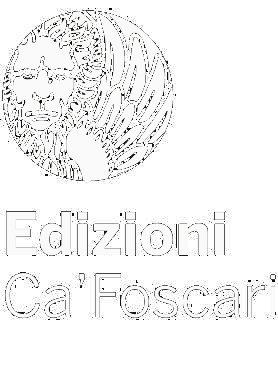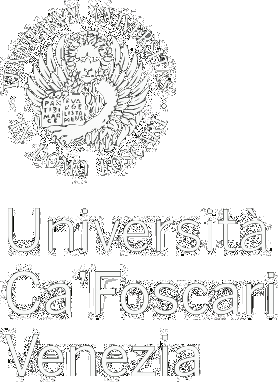Journal | Il Tolomeo
Journal issue | 17 | 2015
Research Article | Storia di un romanzo africano in Italia
Storia di un romanzo africano in Italia
Le traduzioni de L’Enfant noir di Camara Laye
- Linda Framattei - Università di Bologna, Italia - email
Abstract
The idea from which this study originates is that of bringing together two relevant subjects: Postcolonial Literature and Translation Studies, particularly focusing on translation criticism. The novel L’Enfant noir, by the African writer Camara Laye, was first published in France in 1953. The first Italian translation Io ero un povero negro was brought out in 1956, while the second one Un bambino nero appeared more than thirty years later, in 1993. After a brief introduction on Laye’s novel, its plot and main features, this article will deal with the general frame of Postcolonial African Literature, essential to understand the circumstances in which the novel was received and the reactions it provoked. Later on, the article will focus on the central issue of translation, considered on two levels: the first one dealing with what is external to the text itself, that is to say the paratextual elements, such as title and cover image, and the second one referring to the text itself, affected by different translation strategies and choices. This study is aimed at offering a view on the history of L’Enfant noir in Italy, thus reconstructing the evolution Italian culture went through during the second half of the 20th century. Translation represents a unique insight into the frame of mind of a particular period as well as an extremely influential factor in its shaping. This is why we should highlight its importance and motivate people to translate valuable works again, in order not to lose them and keep them always alive and topical.
Published Dec. 31, 2015 | Language: it
Keywords Postcolonial Literature, Translation, Italy and Af
Copyright © 2015 Linda Framattei. This is an open-access work distributed under the terms of the Creative Commons Attribution License (CC BY). The use, distribution or reproduction is permitted, provided that the original author(s) and the copyright owner(s) are credited and that the original publication is cited, in accordance with accepted academic practice. The license allows for commercial use. No use, distribution or reproduction is permitted which does not comply with these terms.
Permalink http://doi.org/10.14277/2499-5975/Tol-17-15-9
Recensioni | Reviews | Comptes rendus
- Ghosh, Vishwajyoti (ed.) (2013). This Side, That Side: Restorying Partition. New Delhi: Yoda Press, pp. 336 Siddiqui, Shahid (2014). The Golden Pigeon. Noida: HarperCollins Publishers, pp. 252
- Esterino Adami
- Dec. 31, 2015
- Sanchez, M.G. (2015). Solitude House. Huntingdon: Rock Scorpion Books, pp. 292
- Esterino Adami
- Dec. 31, 2015
- Lahiri, Jhumpa (2016) In Other Words. Transl. by Ann Goldstein. Gurgaon: Penguin Books India, pp. 233. Transl. of: In altre parole. Parma: Ugo Guanda Editore, 2015
- Esterino Adami
- Dec. 31, 2015
- «Aminata Sow Fall: itinéraire d’une pionnière» (2015). Textes réunis et présentés par Alioune Diaw et Cheikh M.S. Diop. Interculturel Francophonies, 27, juin-juillet, p. 267
- Anna Michieletto
- Dec. 31, 2015
- Fryer, Peter [1984] (2010). Staying Power: The History of Black People in Britain. London; New York: Pluto Press, pp. 648
- Sara Pahor
- Dec. 31, 2015
- Ollivier, Émile (2013). Passaggi. Trad. di Elena Pessini. Piacenza: Nuova Editrice Berti, pp. 190
- Alessia Vignoli
- Dec. 31, 2015
- Meddeb, Abdelwahab (2012). Poema di un sufi senza Dio: Sulla tomba d’Ibn Arabi. Ortica Editrice: Aprilia, pp. 112
- Sara Del Rossi
- Dec. 31, 2015
- Paret, Roland (2011). «Z. L’État haïtien existe, je l’ai même rencontré...». Montréal: Éditions du CIDIHCA, pp. 120
- Sara Del Rossi
- Dec. 31, 2015
- «Rêves fantômes fantasmes» (2014). Ponti/Ponts, 14, 2014, pp. 1-79
- Sara Del Rossi
- Dec. 31, 2015
- «Alain Mabanckou, ou la vocation cosmopolite» (2014). Textes réunis et présentés par F. Mambenga. Interculturel Francophonies, 25, juin-juillet, p. 337
- Anna Michieletto
- Dec. 31, 2015
- «Rêves fantômes et fantasmes» (2014). Ponti/Ponts, 14, pp. 79-350
- Alessia Vignoli
- Dec. 31, 2015
Interviste | Interviews | Interview
- Interview with Sindiwe Magona
- Maria Paola Guarducci
- Dec. 31, 2015
- An Interview with Rosemary Sullivan, after Her Writing Stalin’s Daughter
- Laura Ferri Forconi
- Dec. 31, 2015
Articoli | Articles | Articles
-
What’s in a name?
Language attitudes and linguistic features in NoViolet Bulawayo’s We Need New Names - David Newbold
- Dec. 31, 2015
-
Identité migrante et culture plurielle
La réappropriation du moi à travers les héroïnes de Vénus Khoury-Ghata et de Malika Mokeddem - Francesca Tumia
- Dec. 31, 2015
-
Storia di un romanzo africano in Italia
Le traduzioni de L’Enfant noir di Camara Laye - Linda Framattei
- Dec. 31, 2015
-
D’une édition à l’autre
Le premier roman d’Anthony Phelps quarante ans après - Alessia Vignoli
- Dec. 31, 2015
- Damas, météore
- Kathleen Gyssels
- Dec. 31, 2015
-
La soggettività postcoloniale
Riflessioni a partire da Suheir Hammad, Nathalie Handal e Mohja Kahf - Marta Cariello
- Dec. 31, 2015
-
L’empreinte à Crusoé di Patrick Chamoiseau
L’avventura ‘interiore’ di un Robinson del XXI secolo - Anna Vitali
- Dec. 31, 2015
Testi creativi | Creative Works | Créations
- Myriam J.A. Chancy: an Introduction
- Franca Bernabei
- Dec. 31, 2015
- ‘The Tug’
- Myriam J. A. Chancy
- Dec. 31, 2015
-
Un rire qui nous enterrera tous
Présentation de: Roland Paret, Le rire d’Athanase, inédit - Sara Del Rossi
- Dec. 31, 2015
- Le rire d’Athanase
- Roland Paret
- Dec. 31, 2015
Editoriale | Editorial | Éditorial
- Editoriale | Editorial | éditorial
- Il consiglio di direzione | The Editorial Committee | Le Conseil de Direction Il Tolomeo
- Dec. 31, 2015
| DC Field | Value |
|---|---|
|
dc.identifier |
ECF_article_222 |
|
dc.title |
Storia di un romanzo africano in Italia. Le traduzioni de L’Enfant noir di Camara Laye |
|
dc.contributor.author |
Framattei Linda |
|
dc.publisher |
Edizioni Ca’ Foscari - Digital Publishing |
|
dc.type |
Research Article |
|
dc.language.iso |
it |
|
dc.identifier.uri |
http://edizionicafoscari.it/en/edizioni4/riviste/il-tolomeo/2015/1/storia-di-un-romanzo-africano-in-italia/ |
|
dc.description.abstract |
The idea from which this study originates is that of bringing together two relevant subjects: Postcolonial Literature and Translation Studies, particularly focusing on translation criticism. The novel L’Enfant noir, by the African writer Camara Laye, was first published in France in 1953. The first Italian translation Io ero un povero negro was brought out in 1956, while the second one Un bambino nero appeared more than thirty years later, in 1993. After a brief introduction on Laye’s novel, its plot and main features, this article will deal with the general frame of Postcolonial African Literature, essential to understand the circumstances in which the novel was received and the reactions it provoked. Later on, the article will focus on the central issue of translation, considered on two levels: the first one dealing with what is external to the text itself, that is to say the paratextual elements, such as title and cover image, and the second one referring to the text itself, affected by different translation strategies and choices. This study is aimed at offering a view on the history of L’Enfant noir in Italy, thus reconstructing the evolution Italian culture went through during the second half of the 20th century. Translation represents a unique insight into the frame of mind of a particular period as well as an extremely influential factor in its shaping. This is why we should highlight its importance and motivate people to translate valuable works again, in order not to lose them and keep them always alive and topical. |
|
dc.relation.ispartof |
Il Tolomeo |
|
dc.relation.ispartof |
Vol. 17 | December 2015 |
|
dc.issued |
2015-12-31 |
|
dc.identifier.issn |
|
|
dc.identifier.eissn |
2499-5975 |
|
dc.rights |
Creative Commons Attribution 4.0 International Public License |
|
dc.rights.uri |
http://creativecommons.org/licenses/by/4.0/ |
|
dc.identifier.doi |
10.14277/2499-5975/Tol-17-15-9 |
|
dc.peer-review |
yes |
|
dc.subject |
Postcolonial Literature, Translation, Italy and Af |
|
dc.subject |
Postcolonial Literature, Translation, Italy and Af |
| Download data |
-
file_download 15
-
search 323
-
format_quote 0





